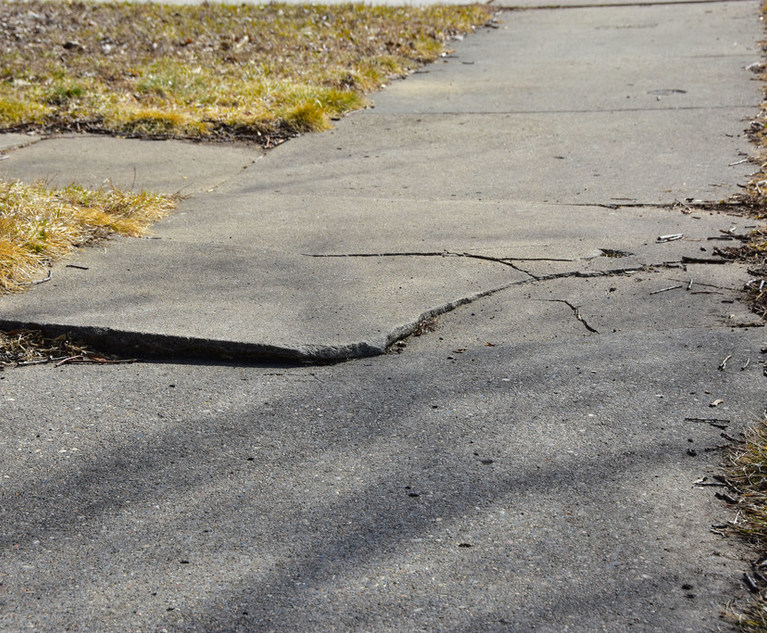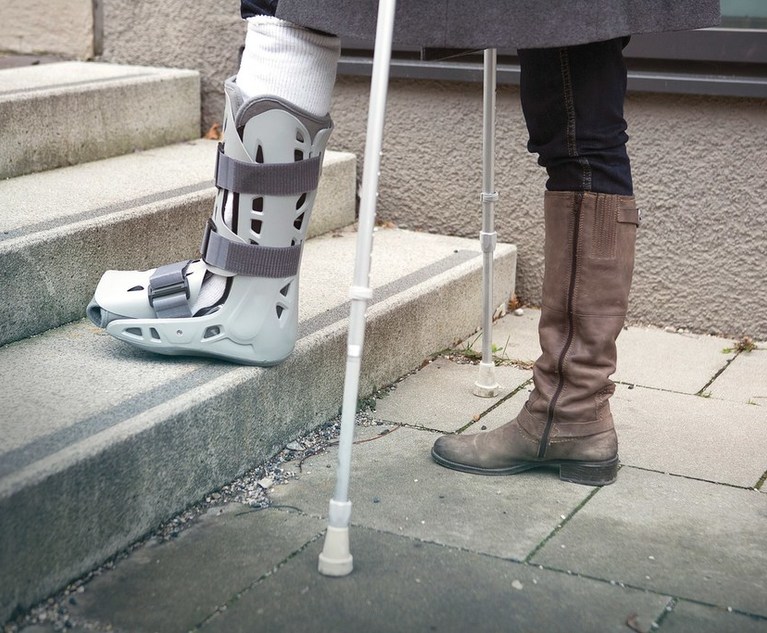Andrea M. Alonso

March 15, 2022 | New York Law Journal
Sidewalk Update: New York City Administrative Code §7-210This article takes look at several cases which address the issue of liability for sidewalk maintenance. The authors conclude that "the purpose underlying the enactment of the exemption in New York City Administrative Code §7-210 is to promote the safety of pedestrians making use of public walkways. Imposing a duty upon owners of real property to maintain the sidewalk abutting their property incentivizes the maintenance of sidewalks and creates safer walkways for pedestrians."
By Kevin G. Faley and Andrea M. Alonso
9 minute read

September 17, 2021 | New York Law Journal
Premeditated Criminal Acts and Landowner LiabilityTwo recent cases in the First and Second Department examine landowner liability when criminal acts occur on their property. The courts took markedly different approaches in analyzing precedent and arriving at their holdings.
By Andrea M. Alonso and Kevin G. Faley
8 minute read

September 03, 2021 | New York Law Journal
Security Guard Liability in New YorkDue to the nature of the profession, security guards and their employers are particularly vulnerable to potential civil liability for intentional torts, negligence, and civil rights violations.
By Andrea M. Alonso and Kevin G. Faley
10 minute read

August 30, 2021 | New York Law Journal
'Serious Injury' UpdateRecent cases are confirming a new trend in no-fault law involving serious injury claims under the significant disfigurement, fracture, significant limitation, gap in treatment, preexisting conditions/previous accidents, and 90/180-day categories. Courts are scrutinizing claims and are inclined to dispose of them when the plaintiffs fail to provide objective evidence in admissible form.
By Kenneth E. Pitcoff and Andrea M. Alonso
11 minute read

August 24, 2021 | New York Law Journal
Residential Landowner's Liability for Third-Party Criminal ActsA landowner who fails to take minimal precautions to protect lawful guests and residents of its premise will be liable for injuries sustained as a result of the criminal conduct.
By Kevin G. Faley and Andrea M. Alonso
8 minute read

August 11, 2021 | New York Law Journal
Understanding New York's 'Zone of Danger' Rule in Non-Automobile SituationsWhile the "zone of danger" rule is often associated with automobile accidents, this article analyzes how the rule is applied in non-automobile situations.
By Kevin G. Faley and Andrea M. Alonso
9 minute read

February 26, 2021 | New York Law Journal
Second Dept. Takes Charge: The Burden of Excluding Third-Party ObserversEliminating ambiguity created in the First and Fourth Departments, the Second Department places the burden squarely on defendants for the exclusion of 'IME Watchdogs.'
By Andrea M. Alonso and Kevin G. Faley
9 minute read

February 23, 2021 | New York Law Journal
'Greene': Court of Appeals Narrowly Expands Recovery for Emotional HarmThe 'Greene' decision is extraordinary in its narrow application. It results in the addition of grandparents to the "definition of immediate family" who may recover if they are in the zone of danger and witness the unspeakable horror of having a grandchild die before their eyes.
By Andrea M. Alonso and Kevin G. Faley
8 minute read

February 03, 2021 | New York Law Journal
Dram Shop Act: Boats, Motorcycles, ATVs and SnowmobilesNew York's Dram Shop Act makes it illegal for commercial vendors to serve alcohol to persons, who are "visibly intoxicated" or under the age of 21. The majority of cases arise when an intoxicated patron leaves the establishment in a car and causes an accident. Liability is not limited, however, to accidents involving cars but has been extended to include boats, motorcycles, ATVs, and snowmobiles.
By Kenneth E. Pitcoff and Andrea M. Alonso
6 minute read

January 21, 2021 | New York Law Journal
JFK Coming of Age in the American Century, 1917-1956In contrast with other Kennedy biographies which portrayed JFK as a dreamy, disorganized, underachiever, this book emphasizes the young Kennedy's obvious gifts. An intense curiosity, bookishness, a love of history and english along with intellectual creativity all distinguished him.
By Andrea M. Alonso
5 minute read
Trending Stories
- 1Reviewing Judge Merchan's Unconditional Discharge
- 2With New Civil Jury Selection Rule, Litigants Should Carefully Weigh Waiver Risks
- 3Young Lawyers Become Old(er) Lawyers
- 4Caught In the In Between: A Legal Roadmap for the Sandwich Generation
- 5Top 10 Developments, Lessons, and Reminders of 2024



